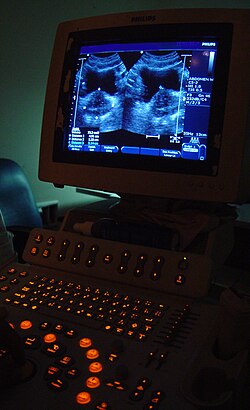For the Russian journal on the subject, see Meditsinskaya Tekhnika.

Ultrasound representation of Urinary bladder (black butterfly-like shape) and hyperplastic prostate. An example of engineering science and medical science working together.
Biomedical engineering has only recently emerged as its own discipline, compared to many other engineering fields. Such an evolution is common as a new field transitions from being an interdisciplinary specialization among already-established fields, to being considered a field in itself. Much of the work in biomedical engineering consists of research and development, spanning a broad array of subfields (see below). Prominent biomedical engineering applications include the development of biocompatible prostheses, various diagnostic and therapeutic medical devices ranging from clinical equipment to micro-implants, common imaging equipment such as MRIs and EEGs, regenerative tissue growth, pharmaceutical drugs and therapeutic biologicals.

No comments:
Post a Comment